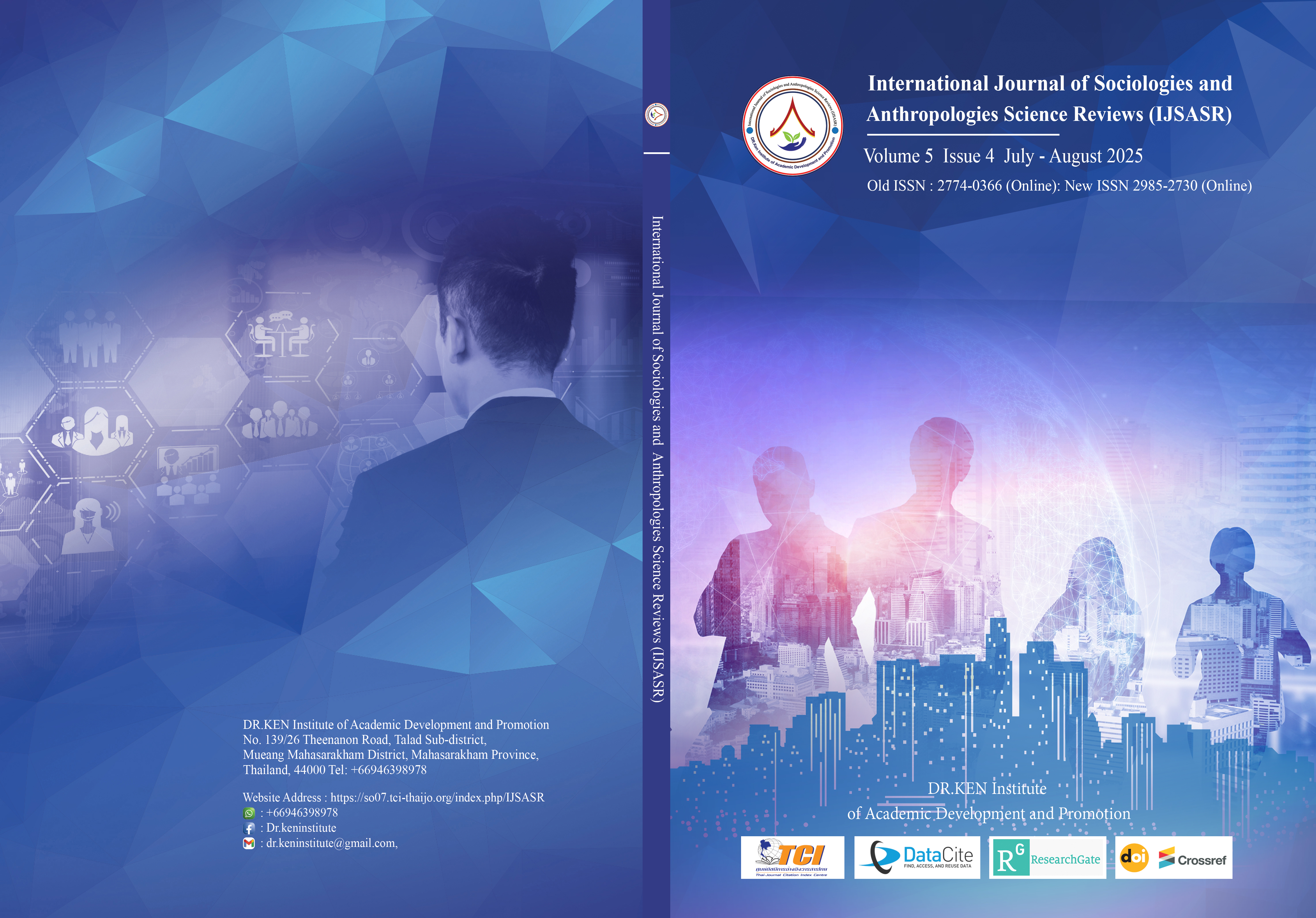Development Guideline to Prevent Injury for Youth Football Players
Main Article Content
Abstract
Background and Aim: According to a recent survey, it is not uncommon for teenage football players to suffer injuries during training and matches. The proportion of sports injuries in youth campus football players was as high as 70.58%, and the highest at 86.78%. The injury sites were mainly in the ankle and knee, 34.13% and 33.33%, respectively, accounting for one-third or more of all injuries. This research aims to develop guidelines to prevent injury for youth football players.
Materials and Methods: This study is a mixed-method study. The study uses a combination of surveys and expert interviews to analyze injury data from 400 youth football players aged 14-16, examining factors such as player position, training duration, and injury frequency. The participants, including 5 experts, were selected to check the quality of the questionnaire (IOC). 7 expert interviews about the way to construct the guidelines for the prevention of injury for youth football players, and 10 experts were invited to verify the science and rationality of the research.
Results: Based on the information provided in the interview and questionnaire results, the researcher designed a POLC model (Planning, Organizing, Leading, Controlling) to prevent injuries in youth football players. Including 16 guidelines on the planning component, 16 guidelines on the organizing component, 16 guidelines on the leading component, and 16 guidelines on the controlling component.
Conclusion: Overall, the consistently high ratings across most of the controlling dimensions reflect a well-structured approach to managing injury prevention, with a few areas highlighted for potential enhancement to further solidify the effectiveness of these strategies. The low variability in responses also underscores a consensus on the robustness of the current measures, aligning closely with best practices in sports injury prevention.
Article Details

This work is licensed under a Creative Commons Attribution-NonCommercial-NoDerivatives 4.0 International License.
Copyright on any article in the International Journal of Sociologies and Anthropologies Science Reviews is retained by the author(s) under the under the Creative Commons Attribution-NonCommercial-NoDerivatives 4.0 International License. Permission to use text, content, images, etc. of publication. Any user to read, download, copy, distribute, print, search, or link to the full texts of articles, crawl them for indexing, pass them as data to software, or use them for any other lawful purpose. But do not use it for commercial use or with the intent to benefit any business.

References
Bahr, R. (2005). Anterior cruciate ligament injuries in football: A prospective cohort study of 122 players with a 2-year follow-up. American Journal of Sports Medicine, 31(6), 831-842
Cao, J. (2023). Integrated sharing: The era's demand for the reform of physical education for disadvantaged students in sports. Sports Science, 34(3), 39–46.
Gao, H. (2022). It is quite sure that youth are the future of China’s football. Sports culture is an important part of our spiritual life.
General Office of the State Council. (2015). General Plan of Chinese Football Reform and Development. General Office of the State Council.
Junge, A., Dvorak, J. (2013). Injury surveillance in the World Football Tournaments 1998-2012. Br J Sports Med. 47(12), 782-8. doi: 10.1136/bjsports-2013-092205.
Li, Y.& Wang, J. (2021). Research on sports injury and prevention in campus Football Review "Football Sports Injury and Protection Guide". Chinese fats. 2, 170-180.
Long, H. (2022). Characteristics of adolescent sports injuries, types and locations, and protective strategies: Rational scheduling of training and attention to nutrition. Zhejiang Sports Science. 33(5), 105-109.
Pluim, B. M., Van Mechelen, W., Twisk, J. W., & van der Maas, P. J. (2006). Incidence, severity, etiology, and prevention of sports injuries in children and adolescents. Sports Medicine, 36(12), 1019-1030.
Sheehan, K. (2012). The prevention of football injuries in children. Current Sports Medicine Reports, 11(3), 125-130.
Soligard, T., Myklebust, G., Steffen, K., Holme, I., Silvers, H., Bahr, R., & Engebretsen, L. (2008). Comprehensive warm-up program to prevent injuries in young female footballers: Cluster randomized controlled trial. British Journal of Sports Medicine, 42(7), 559-566.
State Council of the People’s Republic of China. (2014). State Council's opinions on promoting the development of football in China (No. 46). State Council of the People’s Republic of China
Sun, R. (2020). Elite role and case enlightenment: Research on the organization and operation of community spontaneous youth football activities. Journal of Physical Adult Physical Education. 3, 49-55.
Sun, X. (2014). An analysis of the current situation and causes of adolescent sports injuries and proposed preventive measures. Northeast Normal University.
Wan, L. (2017). The reputation of “the world’s number one sport” is the current situation and solutions faced by primary and secondary school football. College Entrance Examination, 15, 215.
Zhang, H. (2024). The current situation and strategy of campus football sports development. Sports fashion. 2, 56-58.
Zhang, M. (2015). Construct a case database of moral education in middle schools to solve the dilemma of moral education in middle schools. Asia-Pacific Education.
Zhuang, Y. (2022). Investigation and analysis of sports injuries among college football majors. New Sports, (24), 104-106.






